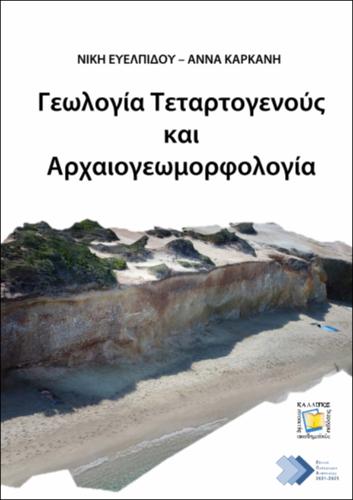| Title Details: | |
|
Quaternary Geology and Archaeogeomorphology |
|
| Authors: |
Evelpidou, Niki Karkani, Anna |
| Reviewer: |
Maroukian, Habik |
| Subject: | NATURAL SCIENCES AND AGRICULTURAL SCIENCES > EARTH SCIENCES > GENERAL GEOLOGY > GEOMORPHOLOGY NATURAL SCIENCES AND AGRICULTURAL SCIENCES > EARTH SCIENCES > GENERAL GEOLOGY > QUATERNARY GEOLOGY NATURAL SCIENCES AND AGRICULTURAL SCIENCES > EARTH SCIENCES > GENERAL GEOLOGY > GEOENVIRONMENT NATURAL SCIENCES AND AGRICULTURAL SCIENCES > EARTH SCIENCES > GENERAL GEOLOGY > GEOARCHAEOLOGY |
| Keywords: |
Climatic changes
Environmental changes Landscape evolution Palaeogeography Palaeoenvironment Geochronology methods Sea level fluctuations Palaeo-hazards Prehistoric man Archaeology Ancient harbors |
| Description: | |
| Abstract: |
Nowadays, as we are all aware of climate and environmental changes, it is of special importance to seek a perspective of the scale and rates through which features of the natural environment have been developed and have been changed in response to natural forces. These changes concern all these aspects of the Earth that humans are active. We know that since the appearance of humans, all these processes have often changed, rapidly and at different scales in various places. The science of Quaternary Geology was developed to investigate and understand these patterns and changes. By definition, Quaternary Geology is interdisciplinary and includes the subjects of geography, geomorphology, biology, physics and chemistry of the Earth, given the complexity of changes occurring in space and time. Although the Quaternary, constitutes only one "moment" (2.58 million years) of the Earth’s history, it is a particularly important period of time, since during this time humans have evolved. In addition to this it includes the present. The events of the Quaternary have been recorded in the sediments, ice sheets, landforms, and relief, with a greater degree of completeness and temporal resolution, compared to other periods of comparable duration. This book not only focuses on this most recent geological period, the Quaternary, but also on the natural processes that shaped the relief and their interaction with archaeology. It also analyzes the climatic changes during the Quaternary as well as their consequences on the relief, the glacial-interglacial periods, the sea level changes, the Holocene transgression, and the effects on the coastal environment. At the same time the modern sea level change trends are also discussed. The contribution of geomorphology to the understanding of relief evolution of the wider area of archaeological sites and the determination of the environmental-morphological changes in various geomorphological environments are analyzed. The interaction of prehistoric humans with the paleoenvironment is described, in terms of the evolution of the relief as a factor in the selection of archaeological sites, and also in terms of the anthropogenic effects on the evolution of the relief. At the same time greater emphasis is placed on new technologies than on research methods and techniques. Finally, characteristic case studies from the Greek and wider Mediterranean area are analyzed.
|
| Linguistic Editors: |
Tzouxanioti, Maria |
| Graphic Editors: |
Tzouxanioti, Maria |
| Type: |
Undergraduate textbook |
| Creation Date: | 23-02-2024 |
| Item Details: | |
| ISBN |
978-618-228-026-3 |
| License: |
Attribution - NonCommercial - ShareAlike 4.0 International (CC BY-NC-SA 4.0) |
| DOI | http://dx.doi.org/10.57713/kallipos-255 |
| Handle | http://hdl.handle.net/11419/9773 |
| Bibliographic Reference: | Evelpidou, N., & Karkani, A. (2024). Quaternary Geology and Archaeogeomorphology [Undergraduate textbook]. Kallipos, Open Academic Editions. https://dx.doi.org/10.57713/kallipos-255 |
| Language: |
Greek |
| Consists of: |
1. Introduction to Quaternary Geology 2. Characteristics and climatic changes of the Quaternary 3. Geomorphological and environmental changes during the Quaternary 4. Basic methods of geochronology 5. Sea level changes during the Quaternary 6. Introduction to Archaeogeomorphology 7. Methods and research techniques 8. Landscape evolution as a factor in the selection of archaeological sites 9. Palaeo-hazards and prehistoric human 10. Understanding the evolution of the coastal zone – Case studies |
| Number of pages |
280 |
| Publication Origin: |
Kallipos, Open Academic Editions |
| User comments | |
There are no published comments available! | |

